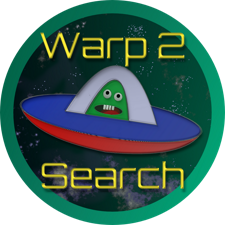Snort, an open-source network intrusion detection and prevention system (IDS/IPS), has recently released versions 3.9.6.0 and 2.9.20. Unlike traditional firewalls that merely filter traffic based on predetermined rules, Snort provides a comprehensive analysis of network traffic to identify potential threats such as malware or suspicious activities. Configured as an IPS, Snort can actively respond to threats by dropping malicious packets, while its primary function is to log detailed information for further examination.
Getting Started with Snort
The application operates via a command line interface, which may pose a challenge for new users. However, users can refer to the documentation found in the installation folder to better understand the setup and operations. Familiarity with basic commands, such as "snort -w," can help users navigate the available network interfaces. Snort's strength lies in its robust, constantly updated rule-based system that allows for the detection of a wide range of threats. Users can utilize built-in rules, download community-created rules, or create custom rules tailored to their specific network needs.
Snort offers multiple operating modes, including Sniffer Mode for real-time traffic capture, Packet Logger Mode for recording data for later analysis, and Network Intrusion Detection Mode for full IDS/IPS functionality.
Geek Verdict
Snort acts as a vigilant guardian of your network, providing enterprise-level security at no cost. While the tool has a learning curve, beginners are encouraged to start with Sniffer Mode to familiarize themselves with its capabilities. Utilizing community resources and tutorials can be beneficial for users looking to deepen their understanding. It’s advisable to back up configuration files before making significant changes, and if issues arise, installing WinPCAP and updating the Microsoft Visual C++ Redistributable Package may resolve them.
Extension
In addition to being a powerful tool for network security, Snort's versatility allows it to be integrated into various environments. Organizations ranging from small businesses to large enterprises can customize Snort based on their specific security needs. For those who may find the command-line interface intimidating, several user-friendly GUI alternatives exist, albeit with varying degrees of complexity in setup.
Future updates to Snort may include enhanced machine learning capabilities, allowing it to adapt more quickly to emerging threats and decrease false positives. As cyber threats evolve, the Snort community's collaborative efforts in updating and refining rules will be crucial for maintaining robust network security.
For users interested in advanced configurations, exploring the integration of Snort with other security tools, such as Security Information and Event Management (SIEM) systems, can provide a comprehensive security posture. By combining Snort's detection capabilities with SIEM analytics, organizations can gain deeper insights into their network behavior and improve their overall threat response strategies.
Overall, as cybersecurity becomes increasingly critical in today's digital landscape, tools like Snort will continue to play a vital role in safeguarding networks against a myriad of threats
Getting Started with Snort
The application operates via a command line interface, which may pose a challenge for new users. However, users can refer to the documentation found in the installation folder to better understand the setup and operations. Familiarity with basic commands, such as "snort -w," can help users navigate the available network interfaces. Snort's strength lies in its robust, constantly updated rule-based system that allows for the detection of a wide range of threats. Users can utilize built-in rules, download community-created rules, or create custom rules tailored to their specific network needs.
Snort offers multiple operating modes, including Sniffer Mode for real-time traffic capture, Packet Logger Mode for recording data for later analysis, and Network Intrusion Detection Mode for full IDS/IPS functionality.
Geek Verdict
Snort acts as a vigilant guardian of your network, providing enterprise-level security at no cost. While the tool has a learning curve, beginners are encouraged to start with Sniffer Mode to familiarize themselves with its capabilities. Utilizing community resources and tutorials can be beneficial for users looking to deepen their understanding. It’s advisable to back up configuration files before making significant changes, and if issues arise, installing WinPCAP and updating the Microsoft Visual C++ Redistributable Package may resolve them.
Extension
In addition to being a powerful tool for network security, Snort's versatility allows it to be integrated into various environments. Organizations ranging from small businesses to large enterprises can customize Snort based on their specific security needs. For those who may find the command-line interface intimidating, several user-friendly GUI alternatives exist, albeit with varying degrees of complexity in setup.
Future updates to Snort may include enhanced machine learning capabilities, allowing it to adapt more quickly to emerging threats and decrease false positives. As cyber threats evolve, the Snort community's collaborative efforts in updating and refining rules will be crucial for maintaining robust network security.
For users interested in advanced configurations, exploring the integration of Snort with other security tools, such as Security Information and Event Management (SIEM) systems, can provide a comprehensive security posture. By combining Snort's detection capabilities with SIEM analytics, organizations can gain deeper insights into their network behavior and improve their overall threat response strategies.
Overall, as cybersecurity becomes increasingly critical in today's digital landscape, tools like Snort will continue to play a vital role in safeguarding networks against a myriad of threats
Snort 3.9.6.0 / 2.9.20 released
Snort is an Open Source network intrusion prevention system capable of performing real-time traffic analysis and packet logging on IP networks.


